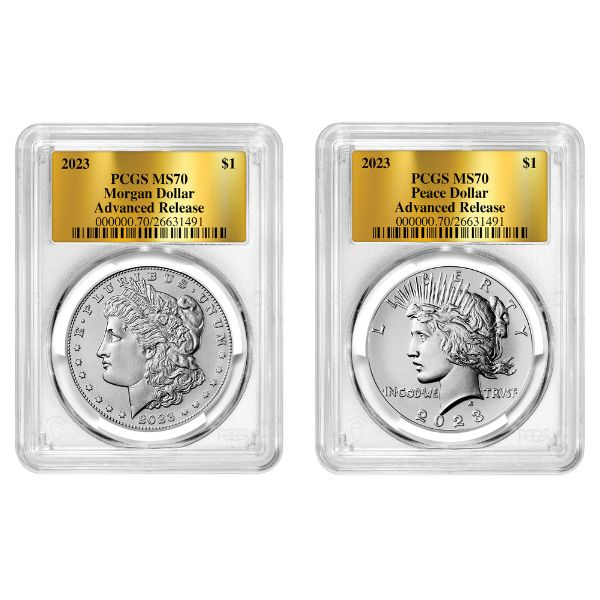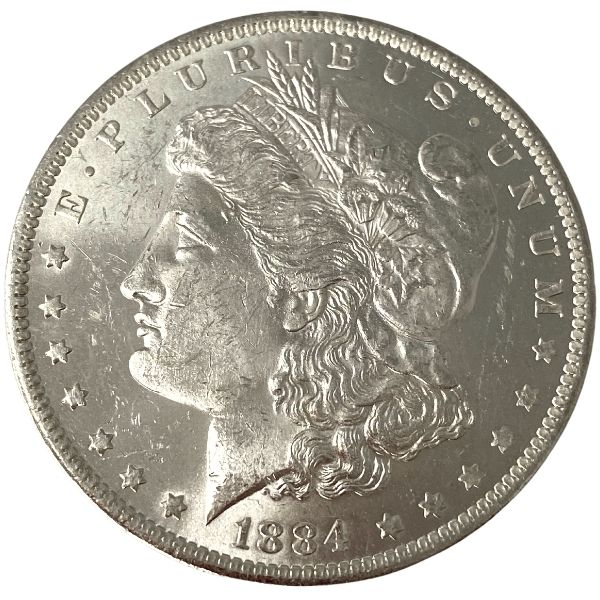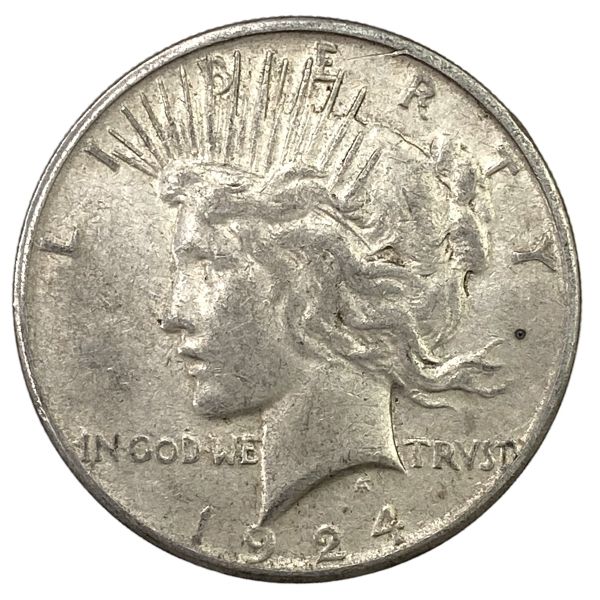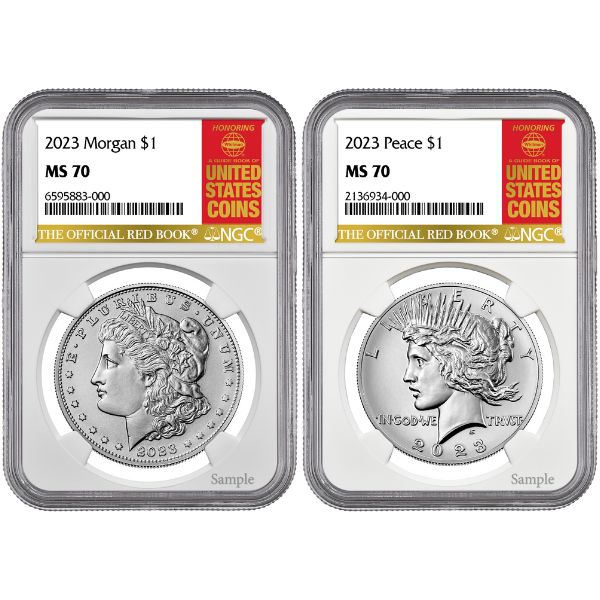How Are Coins Graded? | Rare Coin Certification Explained

At a Glance:
-
-
- A coin’s condition is a big factor in its value.
- Coin grading is a system used to determine the condition of a coin.
- Professional coin graders use a variety of methods to assess coins
-
What is Coin Grading?
Coin grading is a process used to determine the condition of a coin. In the modern era, coins are graded on a scale from 1-70. The higher the number, the better the coin’s condition. As a general rule, coins that grade higher on this scale are more valuable to collectors.
Professional coin grading is a staple of the precious metal industry, but the coin grading process might seem mysterious to new investors. This is a problem, since condition is an important indicator of a bullion coin’s value.
How are coins graded? Why is coin grading important? We’re answering all of your questions about the coin grading system in today’s Bullion Academy guide.
Why it Matters: Coin Condition Explained
Several factors influence the value of a coin. For rare coins, condition is nearly everything. The price difference between a PO1 and MS70 coin is significant. Investors who don’t know how to get their coins professionally graded could miss out on hundreds – or thousands – of dollars.

This makes sense when you think about it. Whether we’re talking about antique gold coins or comic books, condition is important. A factory-sealed classic comic is always worth more than one that’s been ripped apart over time.
How Does Coin Condition Impact Value?
Apart from precious metal content and rarity, condition is the single biggest contributor to a numismatic coin’s total value. Even rare coins take a severe secondary market value hit if they’ve been heavily circulated or damaged.
For some especially rare coins, finding a near-mint condition specimen can be the score of a lifetime. Old coins with limited mintages are almost never available in great condition, because most U.S. coins are heavily circulated for years before they become collectable assets.
How Are Coins Graded?
Usually, coin graders are certified numismatists. A numismatist is someone who specializes in studying and evaluating old, rare coins. The process for becoming a professional coin grader is taxing, and some numismatists look at tens of thousands of gold and silver coins before they’re ready to offer their services to coin collectors.
Coin graders use a variety of specialized tools to assign ratings to numismatic coins. High-powered magnifying glasses are a must, and coin graders use special gloves to handle coins without the risk of damaging them.
Step By Step: The Coin Grading Process
How are coins graded? Unless you’re grading your coins at home, the coin grading process has three steps. Investors who want to have their coins graded need to contact a coin grading service, wait for the grader to evaluate their coins, and then receive a document certifying the coin’s grade.
Consulting a Professional Coin Grading Service
The first step to having your coins graded is to contact a professional coin grader. There are several options for coin grading companies, but one stands out among the rest: PCGS.
Professional Coin Grading Services is by far the largest and most well-known coin grading company. The organization employs some of the most respected and experienced numismatists in the world as coin graders.

After contacting a coin grading service with information about the coin, investors just need to securely ship their investment to their grader’s facility. These services do cost money; we don’t generally recommend professional coin grading for cheap, common bullion coins. If you’re holding onto a rare, valuable coin, paying for a professional grading could be a worthwhile investment.
Numismatists Evaluate Coin Condition
Using their tools and experience, numismatists at a coin grading company will carefully evaluate your coin. Coin grading can be complicated, but the basic concept is simple. Coin graders look at a coin’s circulation wear, luster, and visual appeal to get a rough idea of its grade.
To do this, numismatists use a special magnifying glass called a Loupe. Loupes are very small, powerful magnifying glasses that allow users to look closely at tiny objects like coins. To receive the highest possible grade, coins must be clear of all errors at a magnification of 5x.
Most coin appraisers actually go a step further, making each coin appear 6-8 times larger to get a better look at its small marks, imperfections, and visual appeal.
Receiving a Certificate of Coin Grade
After shipping a coin off to an evaluator, you’ll receive a certificate when the coin comes back to you. Coin grading companies include the coin’s grade, along with a certification of the coin’s authenticity and any notes offered by the appraiser.

Coin certification can go a long way for investors who want to sell their numismatic coins. Coin grading companies like PCGS wrap graded coins in a tamper-evident case. Coin grading documentation sits right above the coin, giving potential buyers a good idea of the coin’s authenticity and condition.
We highly recommend consulting a professional coin grader before selling rare or antique coins. Even if a coin looks great, it may bear signs of circulation or wear that could impact its resale value. A professional coin certification can increase the value of a coin by telling future buyers exactly how well-maintained your coin is.
What Determines a Coin’s Grade or Condition?
Numismatists look at a wide range of criteria to determine the grade (condition) of a coin.
Five common metrics used to evaluate coin grade include:
- Strike
- Luster
- Visual Appeal
- Color
- Preservation
The coin grading process is complicated, which is why it takes so long to learn. Experienced numismatists use quite a few additional ‘tests’ to figure out the precise grade that a given coin should receive. For the most part, though, expect graders to lean on the five criteria above to determine the condition of your coin.

How to Grade Coins At Home
Grading coins at home is possible, but it takes quite a bit of work. To grade coins at home, collectors need to learn two things: how to properly handle coins and what to look for when grading a coin.
Before you jump into the basics of grading coins at home, there are a couple things you need to know. First, handling your coins incorrectly could cost you hundreds of dollars in the long run. Make sure to read up on the proper way to handle gold and silver coins before trying to evaluate the condition of your collectables.
Second, coin graders use sophisticated technology to provide accurate coin condition certifications. If you plan on grading gold coins at home, consider investing in a powerful magnifying device. While 5x magnification is the standard for grading coins, most evaluators go with 6-8x magnification – just to be safe!
Coin Handling Basics
Handling gold and silver coins is an important part of investing. If your coin is already graded and sits inside of a certification holder, we seriously recommend not taking it out of the protective case. Coins that have been graded and are sealed generally won’t be exposed to the elements, so you can assume that your coin’s original condition is still accurate.
If you absolutely must handle your bullion coins, make sure to don a pair of cotton gloves. Our cotton gloves are made using microfibers. Using certain gloves can leave microscopic scratches on the surface of a coin, which can kill its potential for receiving a high grade in the future.

Before grading gold coins at home, you’ll want to completely clear your workspace. Pay careful attention to any liquids around your coin, and be sure to remove food and drink from the area surrounding your work area.
Once you have your cotton gloves, magnifying glass, and clear workspace, it’s time to get grading!
What to Look For When Grading a Coin
Like we mentioned earlier, the coin grading process can take years to learn. However, coin collectors who want to try grading a coin should pay careful attention to two things: imperfections and luster.
Imperfections can be hard to see, so make sure to magnify your coin to 5x its original size before drawing any conclusions. Scratches, marks, dents, and other visual quirks that deviate from the coin’s original, mint-state appearance are considered imperfections and can downgrade the coin.
During the minting process, coins develop a thin, reflective sheen known as luster. Over time, circulated coins lose their luster as they change hands and are exposed to the elements. For a coin to receive the highest possible grades, it needs to have all – or almost all – of its original mint luster.
Take careful notes about your coin’s imperfections, signs of wear, and luster while you do your evaluation. Next, investors can use the Professional Coin Grading Service grading guide to figure out which grade most closely matches the details of their coin.
Coin Grading – What Gives Coins Value?
Coin grading is a process used to determine the relative condition of a collectable coin. Coins are usually graded by professionals called numismatists, who are trained to assess how well a coin has been maintained over its lifespan.
Having a coin graded is one of the best ways to get the most out of your investment. While professional coin grading comes at a cost, the process can increase your coin’s resale value to future buyers.
Grading coins at home is possible, but it comes with a substantial learning curve. If you plan to grade your coins at home, be sure to read up on proper coin handling and take advantage of resources from leading coin grading companies.
The coin grading process is important, but it can also be confusing. We’re here to help; getting your coins professionally graded could save you thousands of dollars.
You might also be interested in:
About The Author
Michael Roets
Michael Roets is a writer and journalist for Hero Bullion. His work explores precious metals news, guides, and commentary.
